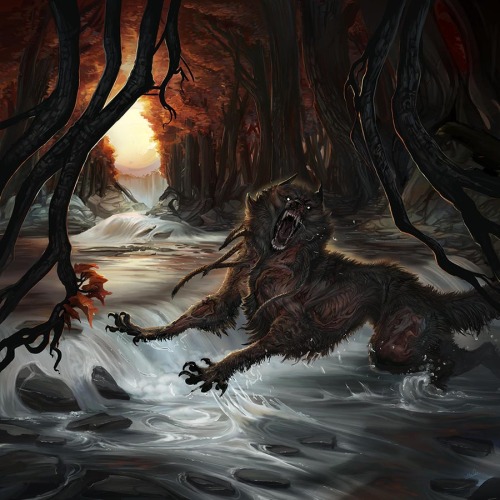crispyfishsticks:My piece for the 2015 Werewolf Calendar. I missed out last year, so was happy to be
crispyfishsticks:My piece for the 2015 Werewolf Calendar. I missed out last year, so was happy to be invited back to contribute this year. A lot of fantastic artists were involved and there was some great art made! You can find (and support) the project here!Caption: Using sophisticated tracking and management protocols, rogue or “lone” werewolves have become less frequent in occurrence in modern days. However, with the continued encroachment of man and domesticated animal species in further remote regions, rabies is sadly becoming a more common affliction among many wild canid species. Though rare, it is no longer unheard of for a werewolf to become afflicted with this illness. With formidable size, intelligence and strength no less than triple that of a wolf, rabid werewolves pose a serious threat. Having high pain tolerance and manic tendencies, rabid werewolves are not easily stopped or captured. Unlike rabies in common dogs or wolves, late stage progression of rabies in werewolves does not always lead to death. The werewolf will lose his ability to shift back into human form as well as lose much of their protective coat. Appearing crazed and wide eyed, the rabid werewolf is easy to identify but should not be approached by an untrained professional. -- source link

